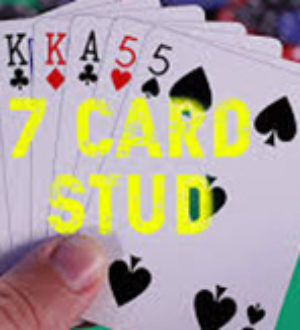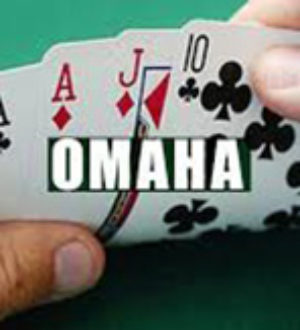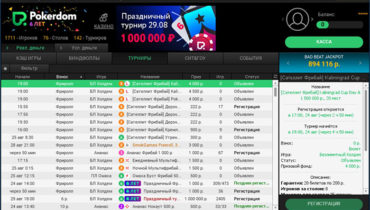Huge growth in popularity of the game in poker made Texas Hold'em the most popular poker game in the world. But before you start playing, you need to learn its basic rules.
Each of the players receives two "pocket" hole cards and five community cards open, which form the so-called "board". Players can use them together with two of their cards to make the best five card poker hand.
There are four types of Texas Hold'em depending on the type of limits:
- Limited (fixed), where in each of the rounds of the game predefined bet sizes are set.
- Unlimited, where you can put at least all your chips at any time.
- Pot limit, where a player can place any bet up to the size of the pot.
- Mixed, where the type of limit changes from fixed to unlimited and vice versa.
Blinds
The button (“button”) marks the nominal dealer of the distribution and the order of the mandatory bets - the blinds. The player next to the button clockwise will post the small blind, and the next player will post the big blind (usually the latter is twice the size of the small blind, but it all depends on the structure of each particular game). Sometimes players are required to place an “ante” bet (another mandatory bet, which is placed by all players, without exception, and, as a rule, it is less than both blinds).
After the necessary forced bets have been made, all players receive two "hole" cards and begin to make their moves. They are made in order of priority - clockwise, starting with the player in the position "under the gun", i.e. from the first player after the big blind.
Player actions
The player can make orders "fold" (pass), "bet", "call" or "raise", and the availability of certain options depends on what action was taken by the previous opponent. Each of the players at any time has the opportunity to "fold", ie. fold your cards, while giving up the fight for the bank. If no one has made a bet in front of you - “bet”, then you can either make a “check” request (do not put chips, but stay in the game), or put a “bet” yourself. But if one of the players has already made a bet in front of you, then you can no longer say “check” - you can make a “fold”, “call” or “raise”. “Call” (or limp) means the previous player has called, and “raise” is an increase in the bet.
Pre-flop
After the players receive two of their hole cards, each of them can continue the game by calling or raising the big blind. The player to the left of the big blind has the right of the first move - he has the option of “fold” (pass), “call” (limp) or “raise”. Then the right to move goes clockwise to the next player (he has the same options, but if there was a "raise" bet before him, he has the right to make another raise - "reraise"). The round ends when all active players (who have not gone into the "pass") have equalized the highest rate.
Note. In the first round of betting, the last move belongs to the player in the big blind, and if there were no more bets than his size, then the player in that position can "raise" by starting the round of betting again, or say "check" and complete the trade.
Flop
After the completion of the first round of betting, three cards are dealt on the board - the "flop". They are common and available to all active players. The second betting round begins with the first active player to the left of the button position. The options are almost the same as on pre-flop, but if none of the previous opponents bet, then you can check by passing the word to the active player on the left.
Thorn
After the second round of betting has been completed, the fourth open card - the "turn" (or "fourth street") is dealt to the board. The trading principle is absolutely identical to the previous round.
River
After the end of trading on the turn, the fifth (last) open card - "river" (or, as it is also called, "fifth street"), is dealt on the board. Trading options correspond to the previous two rounds.
Showdown
If at the end of the round of betting on the "fifth street" in the distribution there are several active players, then the player who made the last highest bet opens his cards first, and then all the rest (clockwise). If in the last round of trading all the players made a “check” order, then the active player to the left of the button opens first. The player with the best five-card hand gets the pot. If there are equal combinations, the bank is divided equally between their owners. The suits have no influence on the determination of the seniority of combinations.
After passing the pot to the winner, the button moves one position to the left and a new hand begins.
The rules of Texas Hold'em, depending on the limits, are practically unchanged, but there are still some differences.
Limited Texas Hold'em
In the last two betting rounds, the sizes of all bets and raise bets are doubled in comparison with the first two rounds. In each of the betting rounds, a maximum of four bets are allowed - bet, raise, re-raise and cap (last possible raise).
No Limit Texas Hold'em
The minimum bet is equal to the big blind, and the maximum is equal to all the player's chips (all-in).
The rule of the minimum raise applies here, that is, it should not be less than a two-fold increase in the previous bet. The minimum reraise is calculated from the size of the previous raise (the difference between the bet and the last raise), i.e. the difference is doubled plus the value of the bet.
The maximum raise can reach the size of the player's entire stack. There is no limit on the number of raises.
Pot Limit Hold'em
The minimum bet size is equal to the big blind, and the maximum should not exceed the current pot size. The minimum raise and reraise are identical to No Limit Hold'em.
The maximum raise is equal to the current size of the pot and is determined by the amount of the active pot, the bets on the table, and the amount that first consists of calling the previous bet and raising on it.
There is no limit on the number of raises.
Mixed Texas Hold'em
Some of the hands are played according to the "no-limit" rules, and some - according to the "limited" ones. To maintain stability in the average pot size, the blinds tend to increase with the transition from No Limit to Limit Hold'em. The distributions are subject to the trading rules of the currently playing limit.








